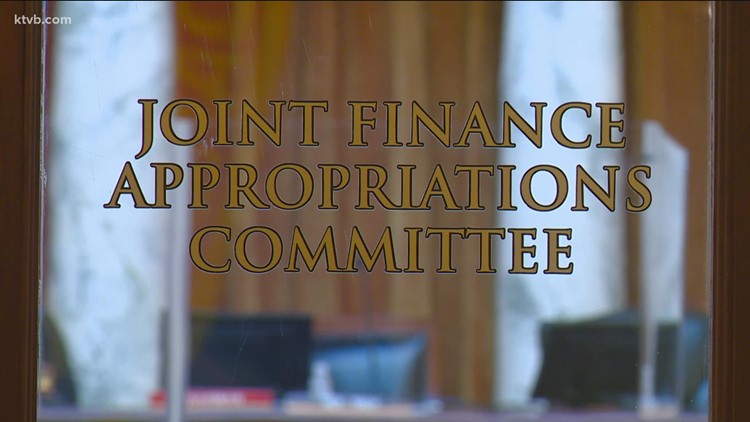BOISE, Idaho — This article originally appeared in the Idaho Press.
Idaho needs to spend 7% more for state employee pay next year, just to keep state workers even with inflation, lawmakers on a key joint legislative committee decided Friday.
The Joint Finance-Appropriations Committee voted 15-5 to allocate funds for 3% across-the-board raises for state employees next year, plus an average of $1.25 per hour for merit-based increases. In total dollars, that comes to the equivalent of 7% for raises, though the merit portion would vary by employee, with larger percentage boosts for lower-wage workers.
The decision, which will now be written into every state agency budget bill, exceeds the governor’s recommendation for 2% across the board plus 3% for merit increases, or 5% in total.
Idaho doesn’t normally provide any across-the-board or cost-of-living raises for state employees; instead, it’s typically set an amount that state agency managers can tap for merit increases only.
Rep. Scott Syme, R-Caldwell, who made the successful motion, said pegging the merit raises to a dollar amount rather than a percentage will mean bigger percentage raises for lower-paid state workers.
Rep. Ron Nate, R-Rexburg, made a substitute motion to adopt the governor’s recommendation, which was substantially lower than the recommendation of the Legislature’s joint Change in Employee Compensation Committee. Syme, who also serves on that panel, made the successful motion both there and in JFAC.
“The CEC Committee met and debated on this and it was a very close vote, it was within one vote of passing or failing,” Nate said. “The governor’s recommendation is a conservative one that I think is appropriate this year when we’re dealing with a lot of budget uncertainty. So let’s stick with the governor’s recommendation. When there’s doubt on the committee’s point of view, let’s take the safe route.”
Idaho has a record budget surplus of $1.9 billion this year.
Syme responded, “Just to clarify that in the CEC (Committee) in the past several years that I’ve been here, it’s always been a close vote. So that is not something unusual. Actually, this is how our democracy operates. It’s 51%. So if people don’t like that, I guess, that’s the way it is.”
Sen. Janie Ward-Engelking, D-Boise, who seconded Syme’s motion in JFAC, said, “There was also a vote for a 7% raise that was very close, and there was a discussion about even higher raises than that. The governor’s recommendation had been made in early fall, and we hadn’t seen what inflation was going to do, so we wanted to get our state employees as close to the inflation rate as we could. And this, in reality, doesn’t even keep them even.”
She urged a “no” vote on Nate’s substitute motion, which was seconded by Rep. Priscilla Giddings, R-White Bird.
Nate’s substitute motion failed on a 5-15 vote, with just Sen. Carl Crabtree, R-Grangeville, and Reps. Paul Amador, R-Coeur d’Alene, and Wendy Horman, R-Idaho Falls, joining Nate and Giddings in supporting it. The original motion then passed on a 15-5 vote.
Sen. Jim Woodward, R-Sagle, said, “I think that with 7.5% inflation and a tight labor market, the original motion reflects what we need to do to serve our constituents, to make sure we keep our state employees.”
The joint committee will begin setting state agency budgets on Monday. On Friday, it voted on a series of statewide budgeting decisions that set the framework for all those budget bills, including state employee raises.
The joint committee also voted 18-2 to adopt a revenue estimate for budgeting purposes for next year that’s $100 below the governor’s recommendation, which was $141.4 million less than the revenue figure adopted by the Legislature’s joint Economic Outlook & Revenue Assessment Committee. Nate and Giddings were the only dissenters; they also were the only two on the 20-member joint committee to back Nate’s substitute motion for an even lower figure.
Nate argued, “It’s best to be on the conservative side and deal with surpluses, than be on the generous side and deal with shortfalls.”
The joint committee also approved several major supplemental appropriations – spending proposals for the current year – on unanimous votes, including transferring $228 million from the state general fund for transportation projects including big investments into repair and replacement of local bridges.
That endorses Gov. Brad Little’s proposals to spend $246.5 million from the state general fund this year on major transportation investments, including $200 million for local bridge maintenance, repair and replacement; $18.5 million for an early payoff of GARVEE bonds issued in 2012 for highway construction, saving on interest costs; $10 million for local pedestrian and safety projects; $10 million for access improvements at the Port of Lewiston; $8 million for railroad crossings and tracks; and $6.4 million for airport improvements around the state.
JFAC also unanimously backed Little’s proposal to spend $5.7 million from the general fund this year to upgrade public safety communications infrastructure, including $4.4 million for maintenance and upgrades to the statewide microwave radio system.
This article originally appeared in the Idaho Press, read more on IdahoPress.com.
Watch more Idaho politics:
See all of our latest political coverage in our YouTube playlist:



